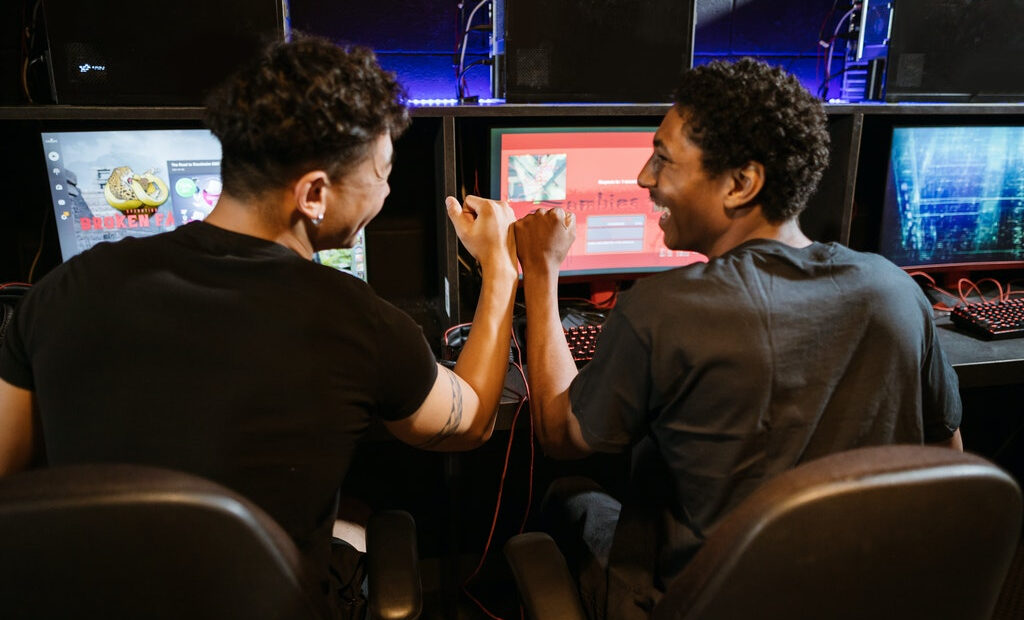From chat to play: Messaging apps transform gaming

Messaging apps are no longer just places to swap texts. They have turned into social hubs where people share photos, watch clips, shop, and increasingly, play games together. That shift matters because it moves gaming closer to the conversations that already keep people engaged for hours each day. When play lives inside the chat window, there is less friction, more spontaneity, and a stronger sense of community.
Why games belong inside chats.
A decade ago, most mobile play meant downloading a separate app, creating an account, and waiting through updates. Now the average user lives inside a handful of messaging platforms. If a quick puzzle or a head-to-head trivia round can launch inside that same space, the barrier to play drops. No context switching is required and there is no need to persuade others to install additional software. Invites, taunts and score sharing occur within the same thread, keeping the loop tight and social by design.
Where Telegram fits into the picture.
The platform stands out for its developer friendly tools. Bots, mini apps, and web-based game shells let creators deliver full experiences without the overhead of a traditional app store launch. For operators and studios, integrating games into a Telegram casino can be a practical path to market because the chat layer handles discovery and community, while the mini app handles play, payments, and identity inside a familiar interface. That lets teams focus on the experience itself instead of wrestling with heavyweight distribution.
How chat first games actually work
Under the hood most messaging based games are lightweight web experiences. A bot handles commands, routing, and notifications. The game runs in a lightweight mini app that loads quickly and retains player identity. Group chats become lobbies. Leaderboards sit one tap away. Notifications nudge players back for daily challenges or limited time events. Since everything lives where people already talk, re engagement is built into the flow.
Payments tend to mirror the platform. Some titles rely on third party processors. Others use platform specific payment interfaces. Either way, the purchase flow aims to be short and clear because long forms and clunky redirects kill intent in a chat setting. The best teams test that flow as carefully as they test the gameplay.
What players actually do in chat based games
Sessions are short and frequent. People drop into a quiz between meetings, spin a wheel while waiting for a train, or clear a puzzle while watching a match. Friends challenge friends in the same thread and the chat becomes the commentary box. Community features matter. Simple things like a weekly reset, a shared goal for the group, or a celebratory message when someone hits a milestone can lift retention more than an extra level pack.
Discovery is also different. In a store, players search. In a chat, discovery follows social cues. A link from a friend, a bot message with a small prize, or a clan invite often outperforms banner-style promotion. Games that feel natural to share tend to succeed, helped by clear rules, quick starts and rewards that can be shown to the group.
Business models that make sense here
Micro purchases remain the backbone. Cosmetic upgrades, extra lives, and time savers work as long as the offer is respectful and clear. Subscriptions can fit too if the game delivers ongoing value like premium tournaments or ad free play. Some studios use brand tie ins for special events that live for a week and then roll off. Advertising can supplement revenue, but it must be gentle. Full screen interstitials feel jarring in a chat window. Short, quiet placements or sponsored challenges tend to perform better.
For experiences where money is involved, the model is more regulated. Identity checks, payment safeguards and responsible-use features are not optional. Age gates, spending limits and transparent systems protect both the player and the platform. In a chat-based context, these controls need to be visible and easy to adjust, not buried behind menus.
Design principles that separate hits from forgettable experiments
Friction is the enemy. A good chat-first game loads quickly, explains itself in a line or two and allows immediate action. Controls remain simple because most play happens with one hand. Visuals are legible on small screens. Social actions are obvious. Invite a friend, join a table, claim a reward, and share a win should each take a single tap. Little touches help, like a personal message from the bot that celebrates progress in plain language rather than system jargon.
Events keep the room alive. Limited time tournaments, daily streaks, and weekend quests give people a reason to return. Group goals can be surprisingly powerful, whether the prize is status, cosmetics, or access to a special room. The goal is not just time spent. It is momentum that the group can feel.
Challenges not to ignore
Platform dependence is real. If an algorithm changes or a feature is deprecated, traffic can shift overnight. Teams mitigate that risk by building direct relationships with communities and by keeping an email or web touchpoint outside the chat platform. Security is another must. Bots and mini apps handle accounts and payments, which means encryption, audit trails, and regular updates are part of the day to day. Finally, moderation matters. Chat spaces can be noisy. Clear rules and active tools for reporting keep the experience welcoming.
Regulation sits over all of this, especially for money games. Jurisdictions differ on what is allowed, how identity is verified, and how disputes are handled. Successful operators treat compliance as a product feature. They explain the rules in simple terms, respond quickly to questions, and surface controls where players need them.
What to watch next
Messaging platforms will continue to blend communication and entertainment. Expect more real time multiplayer, smarter bots that act like hosts rather than menus, and deeper links between the chat thread and the game state. Telegram will likely remain a hotspot for experimentation because it gives developers room to build. If creators keep respecting the strengths of chat, small, social, and immediate, the next wave of casual gaming will not feel like a separate destination. It will feel like a natural step inside the conversations people are already having every day.
The editorial unit

























Facebook
Twitter
Instagram
YouTube
RSS